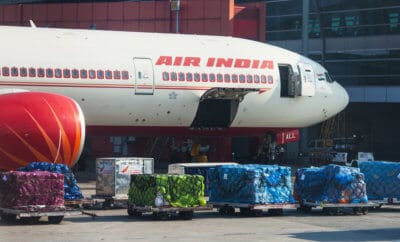Business
Number of Indian Workers in Saudi Arabia Sees Sharp Rise

Riyadh
Wikimedia Commons
The number of Indians in Saudi Arabia rose from 3,039,193 people in March to 3,253,901 workers by October this year.
The number of expatriate Indians in Saudi Arabia saw a sharp rise between March and October, according to data from the Embassy of India in Riyadh. Saudi Arabia is also the most preferred destination for Indians seeking jobs abroad, which makes the Gulf nation the highest source of remittances to India.
There were 3,039,193 Indians in the country in March, and the number rose by 200,000 by October. The 3,253,901 migrant workers include doctors, engineers, oil technologists, and IT experts, apart from blue collar workers.
While India remains at the top of list of countries receiving foreign remittances — money sent by migrant workers to their family — the amount dipped in 2016, according to the World Bank Migration and Development Brief released in April. A decrease of 8.9 per cent in remittances was marked since 2015 to 2016. While the amount was about $68.9 billion in 2015, it dropped to $62.7 billion last year, owing to lower oil prices, the World Bank data showed. Saudi Arabia’s contribution to remittances in India was $10.5 billion in 2015, and it went down by over $6 billion in 2016, according to Pew Research Center data. China was close behind India, with $61 billion in 2016.
However, remittances from the Gulf region are likely to increase now as the price of a barrel has increased to $60 from $25 in 2016.
Nationalization policies, such as those put in place in Oman, also contributed to lower remittances. However, Qatar has eased policies for migrant workers since winning the chance to be the host of Fifa World Cup in 2022.
In Saudi Arabia, expats with families have to pay a monthly tax based on the number of dependents, with the amount being 100 Saudi riyals per dependent now, which is expected to be increased to 400 Saudi riyals by 2020. By 2020, each migrant worker will also have to pay an “expat tax.”
The gulf country is introducing the new policies to make it easier for locals to get jobs and reduce unemployment. The country also withdrew subsidies on electricity and water for everyone. Prices are also expected to go up when the Value Added Tax (VAT) is introduced in Saudi Arabia.
However, in 2018 India is likely to have higher remittances due to the increase in price of the oil barrel. World Bank predicts that $460 billion will go to developing nations as remittances by 2018.



